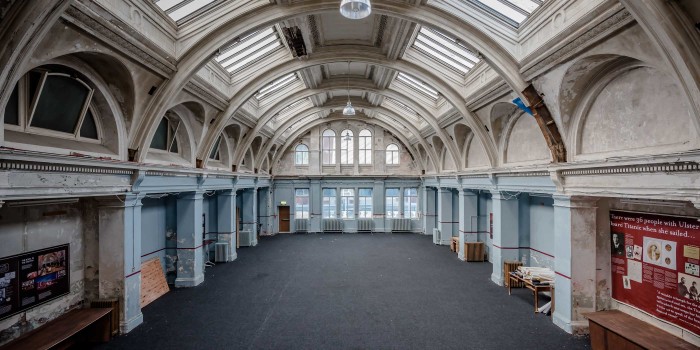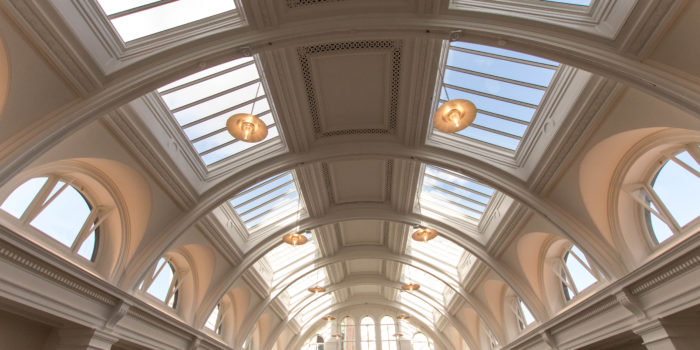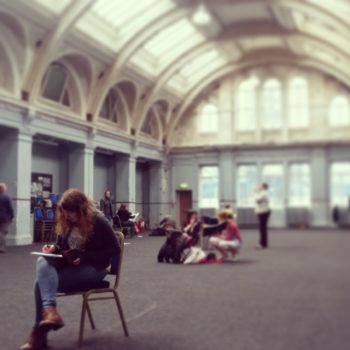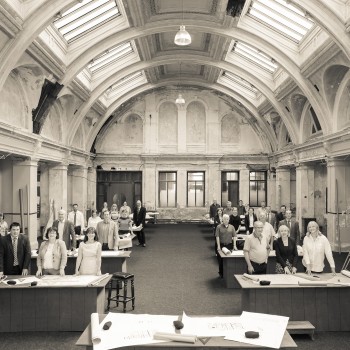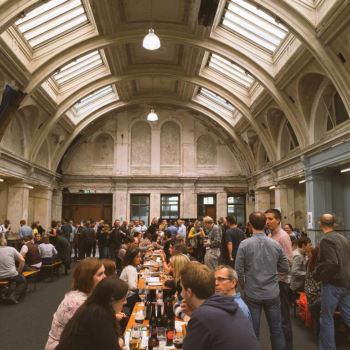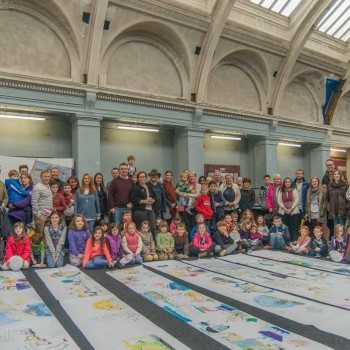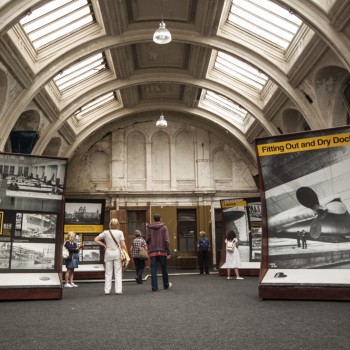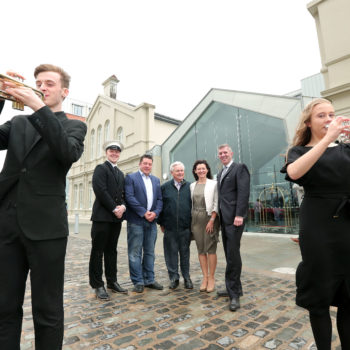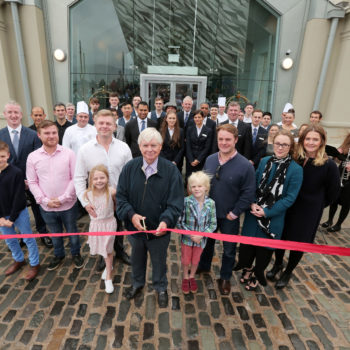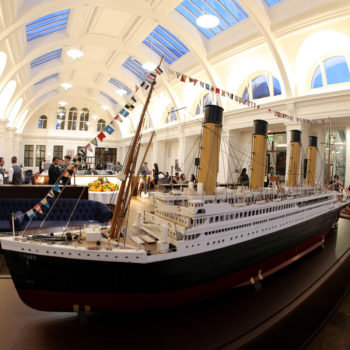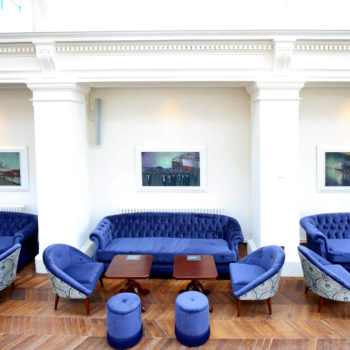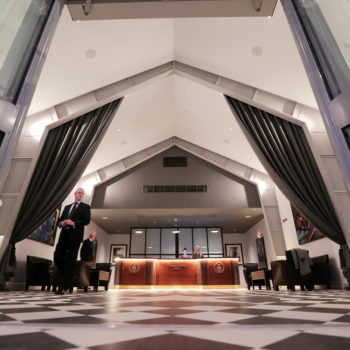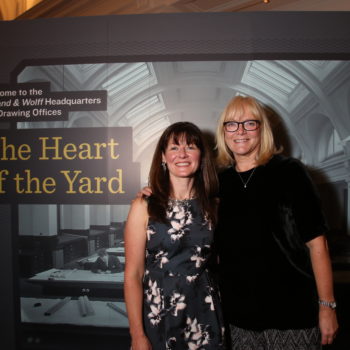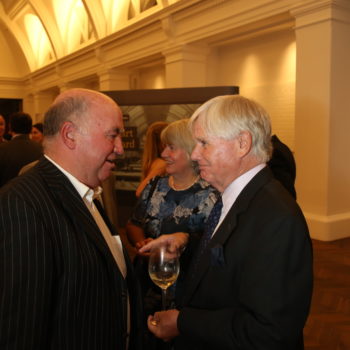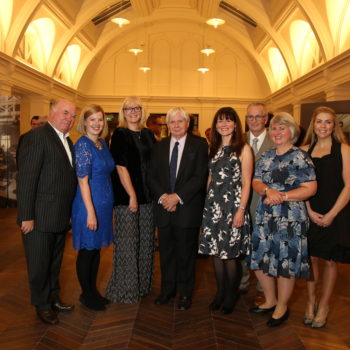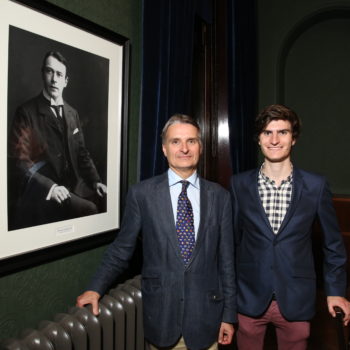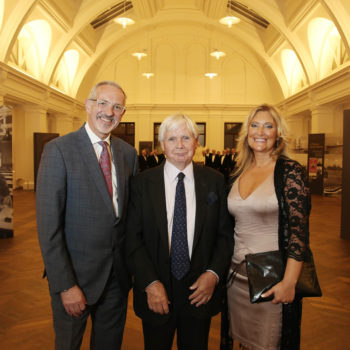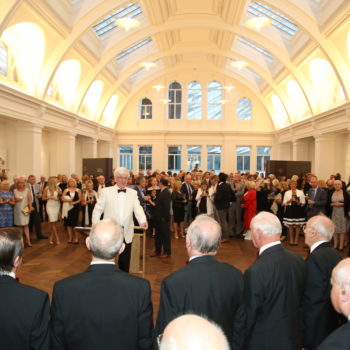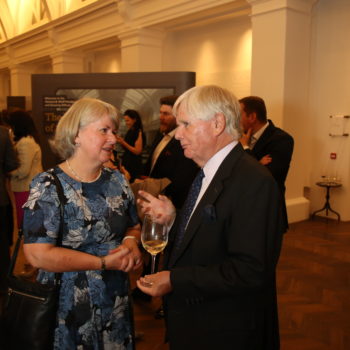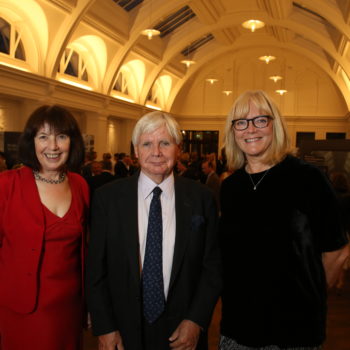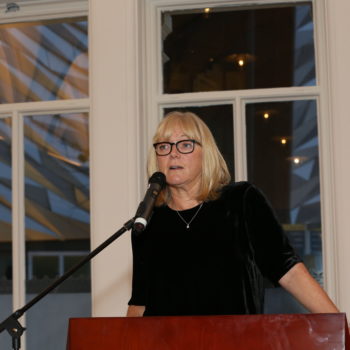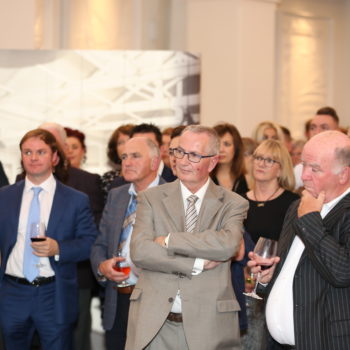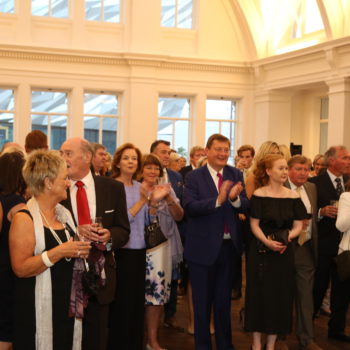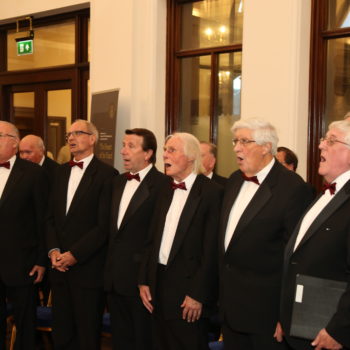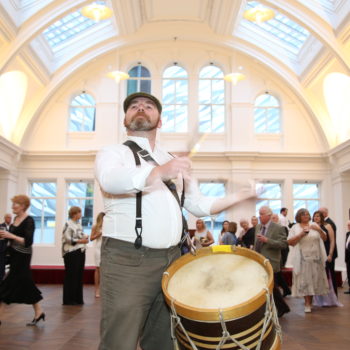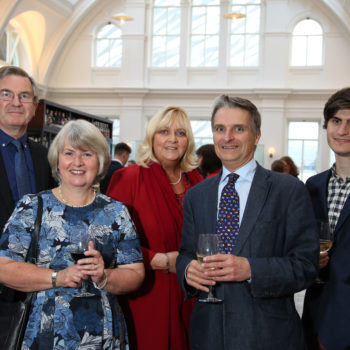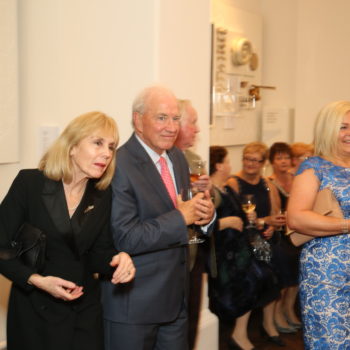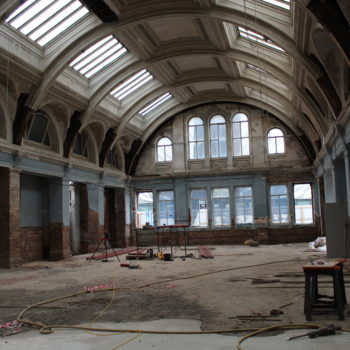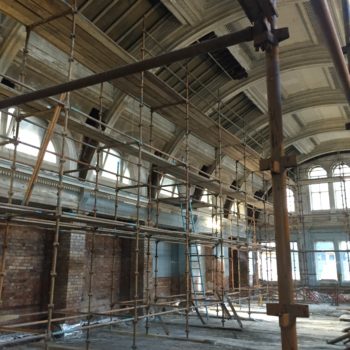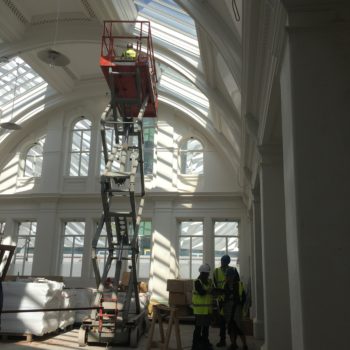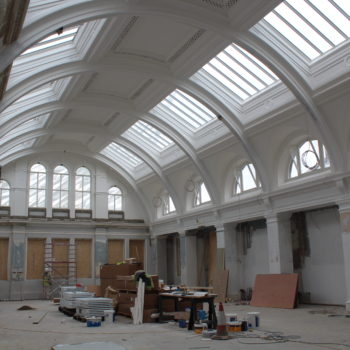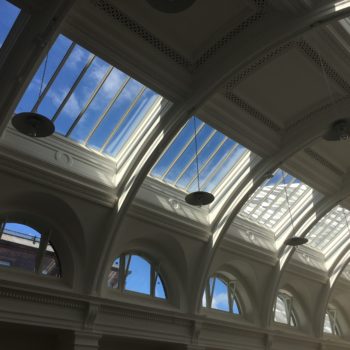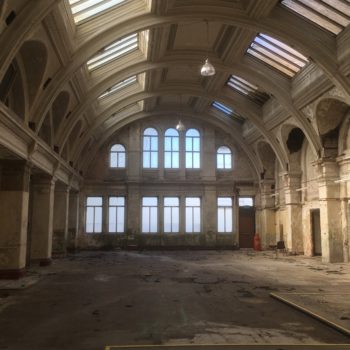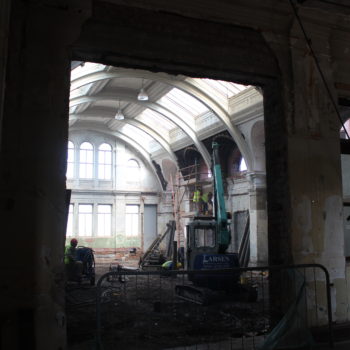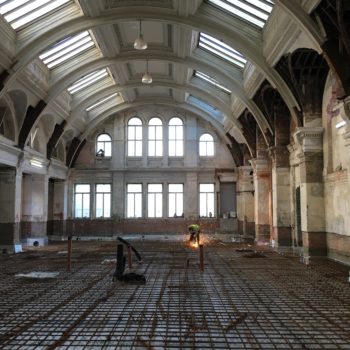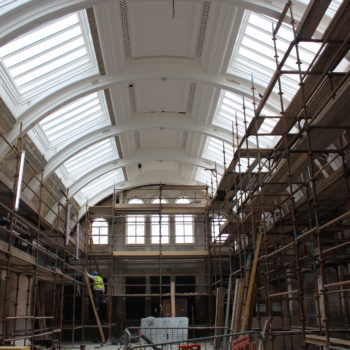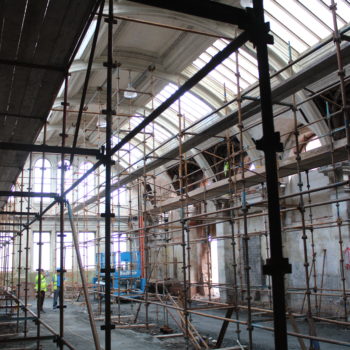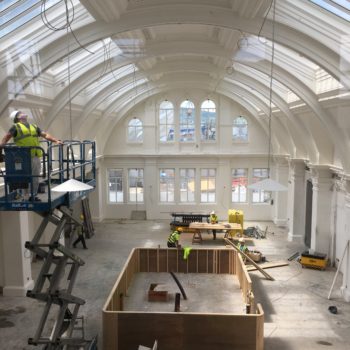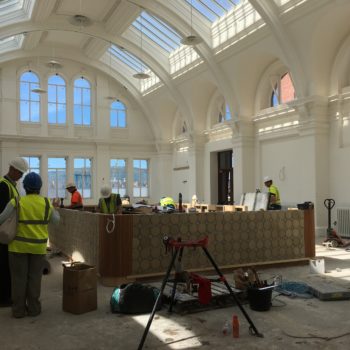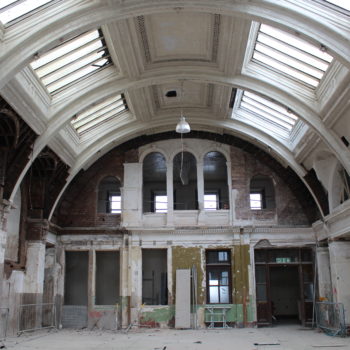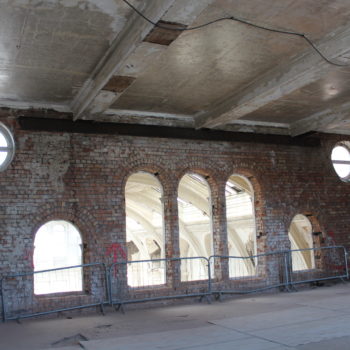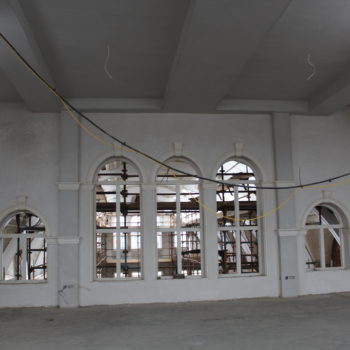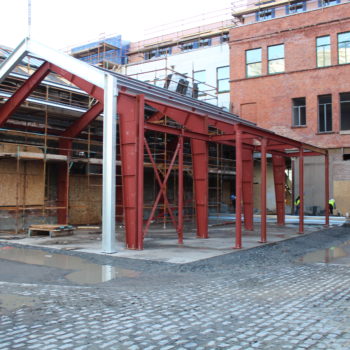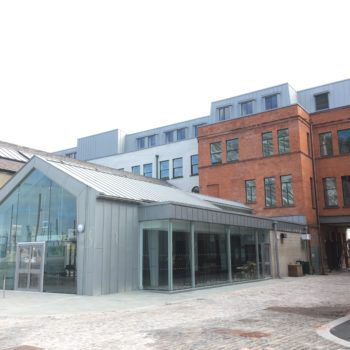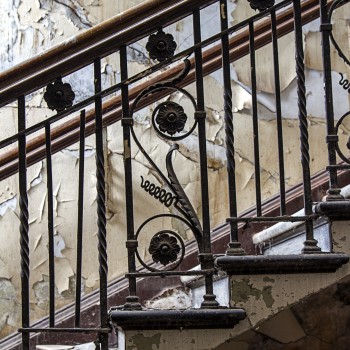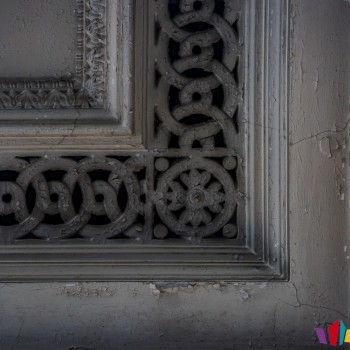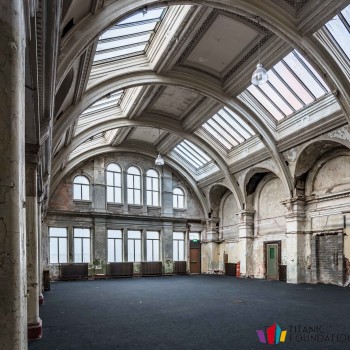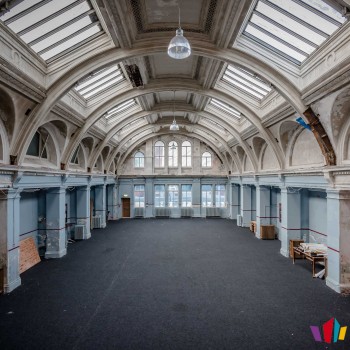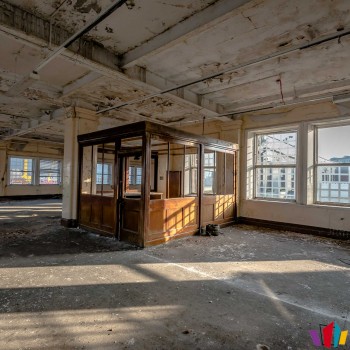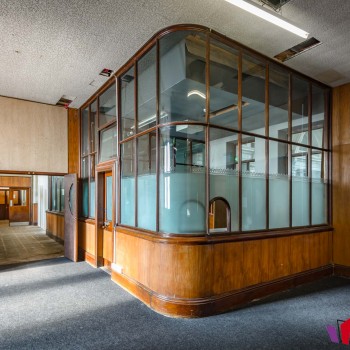The H&W Drawing Offices
A building at risk
The former Harland and Wolff Headquarter Building and Drawing Offices built c. 1886 – 1917, is a B+ listed building. Once the control centre for the largest shipyard in the world, it was the centre of Harland and Wolff activities for more than a century, where men created, designed and built thousands of ships including the White Star Olympic Class Liners – Olympic, Titanic and Britannic and naval warships such as HMS Belfast.
The building was vacated by Harland & Wolff in 1989, and unoccupied for almost 30 years. In 2002 the building was listed, confirming its unique historical and architectural significance, though it was considered ‘at risk’ for more than a decade. The southern wing, which was the former Administration block, was renovated in 2007 and is now Titanic House, home to the offices of Titanic Quarter Limited, Todd Architects and the Maritime Belfast Trust.
The building was used for ad-hoc purposes over the decades, for films & TV shows including City of Ember, Killing Bono, Small Island, Puckoon, and most recently Lost City of Z. The director of City of Ember was so taken by the revolving doors of the Directors Entrance, they were recreated on the set. The Royal Ulster Academy of Art held their annual exhibition in the building, and millions of TV viewers watched the BBC’s Antiques Roadshow filmed in the Drawing Offices.
In 2012, the remaining derelict blocks of the HQ building including the Drawing Offices were transferred to Maritime Belfast under a seven year lease. Maritime Belfast undertook numerous additional works to allow the Drawing Offices to be opened to the public again for tours and pop-up events, while developing a long term plan for the building. Guided tours resumed with Titanic Belfast’s Discovery Tours, Titanic Walking Tours and Susie Millar’s Titanic Tours. The building was opened for European Heritage Open Day, the Belfast Titanic Maritime Festival and Tall Ships, and lots of small events and pop-ups, from Beer Festivals to Homecoming Banquets and reunion events. We even recreated the most famous image of the Naval Architects with former employees and project supporters.
From Drawing Offices to a Titanic hotel
In 2015 Maritime Belfast successfully applied to the National Lottery Heritage Fund’s Heritage Enterprise programme, and were awarded £5million towards the restoration of the Drawing Offices. The grant is designed to help when the cost of repairing an historic building is so high that restoration simply is not commercially viable. Grants of £100k to £5 million bridge the financial gap, funding the vital repairs and conservation work needed to convert derelict, vacant buildings into new, usable commercial spaces that can have a positive impact on local economies.
The building would be transformed into a boutique hotel, with the Drawing Offices at the very heart of the project. Work began in March 2016, focusing on restoring the heritage features, and repairing the damage caused by the building being empty for almost thirty years. A fourth floor was added, replicating the mansard roof that was there decades ago, and new pavilions were added in between the Drawing Offices replacing what had previously been removed. The upper floors turned into bedroom accommodation. Where possible heritage elements have been retained and reused in the building, from the original window frames and sills, to the historic tiles, reimagined on the island bar in Drawing Office 2, or the glass screens that decorate the Reception desk and were originally upstairs. The style and décor of the finished hotel has been very much influenced by both the details that were in the building, and by the historic images of H&W at their prime.
Titanic Hotel Belfast officially opened on September 10th, 2017.
A brief history
Referred to as the ‘Main Offices’ on many of the maps of the shipyard, the two Drawing Offices were constructed first in 1886 and were designed to capture as much natural light as possible. They were unique for shipyard drawing offices as they were usually temporary wooden structures that could be easily moved around the site. But as Harland and Wolff began to establish themselves on Queen’s Island they had plenty of land to expand into, and the Drawing Offices served as a physical example of what they could produce in their client’s ships.
Many of the same features that could be found on the Olympic class liners are also in the Drawing Offices, such as the dentil moulding that lines the walls. The floors throughout the building were laid with the same tiles as the first class smoking room and the swimming baths on Titanic. The theory persists that these tiles were destined for the last of the Olympic Class liners, the Britannic, but when it was requisitioned to be a hospital ship in the First World War, the tiles were surplus to use. The building is also built of the same battleship quality steel as many of Harland and Wolff’s ships.
The HQ Building & Drawing Offices expanded along with the shipyard, with Accounts and Admin Blocks added in 1906-10, and the front first storey offices expanding further in 1911 to join the Admin and Accounts Blocks to the Drawing Offices and create the redbrick and sandstone façade that the building retains. A fourth floor was added later, along with small pavilions that contained additional drawing offices, including a strong room that stored all of the ships plans.
As the shipbuilding industry began to decline, the building itself changed as well. The beautiful Presentation Room, which was an ornate room overlooking Drawing Office 2 where important clients had their ship plans presented to them, became a display room, with rows of wooden cabinets and samples of tiles and fixtures and fittings clients could choose from. The fourth floor was removed, and the small pavilions demolished. Always a working building the HQ Building & Drawing Offices had to adapt to suit the needs of the shipyard. By the 1980s shipbuilding had declined greatly, and though Harland & Wolff were diversifying into oil rigs and platforms, the business had changed. In 1989 it was privatised in a management / employee buy-out, and the HQ Building & Drawing Offices was abandoned along with a large parcel of land on the Queen’s Road.
